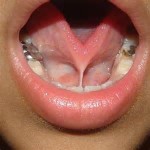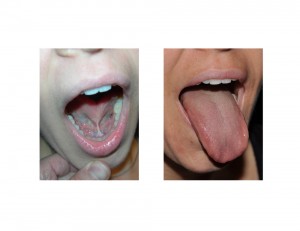
There are numerous potential functional limitations from a severe tongue tie from eating, speech and dental development. While somewhat controversial for some, a tongue tie release or ankyloglossia surgery is often done early in life to give the tongue full range of motion and to prevent any subsequent functional limitations. This procedure of often combined as part of other minor surgeries as it requires an anesthetic given the very young age of the patient.
Seeing an adult with a significant tongue tie is rare since they are almost always released early in life. The main reason an adult would finally release it is if they desired greater tongue mobility, particularly that of tongue protrusion. This can translate into an improved ability to clean the teeth with tongue during and after eating. The second benefit would be an improved ability to use the tongue during intimacy.
Case Study: This 24 year-old female had long wanted to have her congenital tongue tie released. She has never been able to stick her tongue out and had always felt her ‘forked tongue’ was unusual.


Case Highlights:
1) Significant tongue tied in adults is fairly rare due to its tongue mobility restrictions and earlier treatment for release.
2) Tongue tie release surgery in adults can be done under local anesthesia as an office procedure in adults.
3) The simplest and most effective tongue tie release surgery is a V-Y advancement technqiue.
Dr. Barry Eppley
Indianapolis, Indiana



